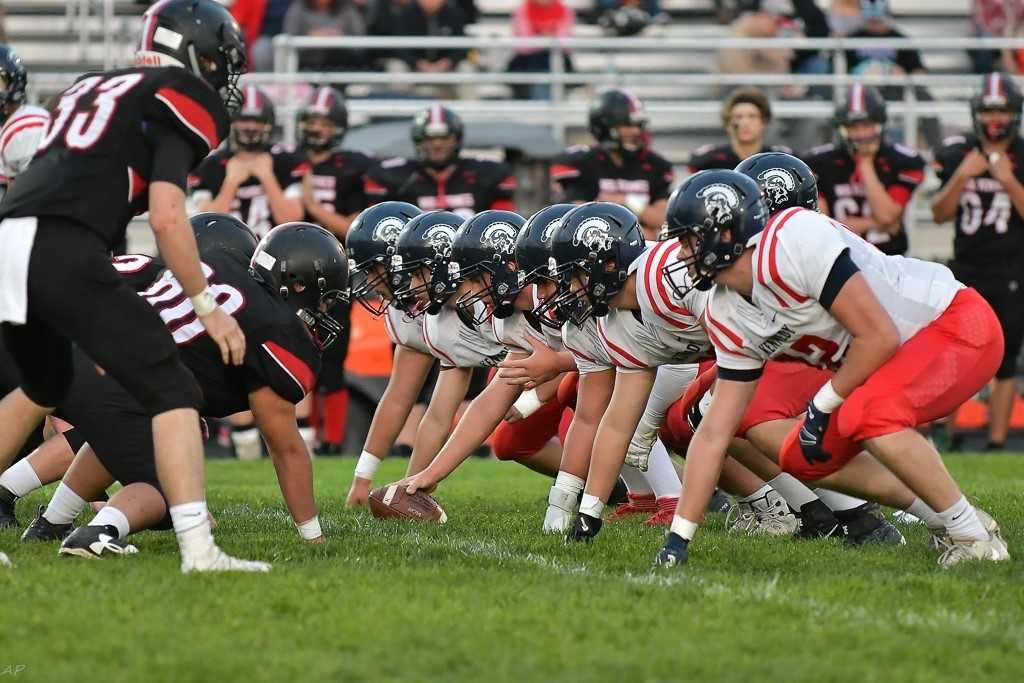
The landscape of small-school football in Oregon could dramatically shift in 2020, if changes recommended by the OSAA football ad-hoc committee are adopted.
In an update released Thursday, the committee recommended that 2A schools – many of whom are struggling to field 11-man teams – change to nine-man next season. Any 2A schools that wish to continue playing 11-man would have the option of moving up to 3A for football only, under the recommendation.
OSAA assistant executive director Brad Garrett said that the radical change is “logical, in this case.”
“There are potentially some 2A schools that would prefer to play 11-player. If you do, go ahead and go up to 3A and play,” Garrett said. “Those top-end 2A schools, there are probably some that would decide to go up.”
Currently, 2A schools in a designated “enrollment zone” – from 89 to 120 -- have the option of playing 11-man or eight-man. Under the recommendation, that zone would be eliminated, requiring those teams in the zone to play nine-man.
Garrett said that 2A schools are split on their preference between 11-man and nine-man.
“There is a portion of them that say, ‘Hey, if you don’t give us nine-player, we’re in trouble,’” Garrett said. “There’s a portion that say, ‘If nine-player is the way we have to go, while I would prefer to play 11-player, I would prefer to stay in 2A. And if they’re going to play nine-man, I will.’ But then you’ve got a group that has indicated they are not interested.”
The committee also has endorsed extending the six-man football pilot program, which was introduced in 2018, for two more years.
Six-man has not had an OSAA playoff in its two seasons, and considering it started this season with 18 teams and finished with 12, the committee did not recommend a awarding a championship at this point. But the committee did recommend extending the six-man contest cutoff for two weeks to allow for an “unofficial” semifinal and championship game.
Garrett said that some six-man schools have requested that the committee consider establishing an enrollment limit below the current 89, which could keep some successful eight-man teams from dropping down.
The number of teams fitting in the gap between a modified six-man cutoff and 89 (the lower end of 2A) would determine the plight of the eight-man game. To continue eight-man, it would have to include enough teams to support an OSAA championship. In that case, Garrett said, it is possible that eight-man would not have enough teams to support a championship.
“That’s going to be where input from schools will be critical,” Garrett said. “I think a number of the committee members believe that’s what’s in the best interest of the association long-term, and schools will need to be able to provide rationale on why a lower six-player cutoff should not be made.”
The committee also addressed the status of schools that met OSAA criteria to move down one classification for the 2018 and 2019 seasons. It determined that schools with a two-year, in-class winning percentage of 66.67 or higher, or those that won a playoff game, would be required to move back up.
That means that of the 20 schools that moved down, four meet the criteria to move up: The Dalles (back to 5A), Hidden Valley (4A), Warrenton (3A) and Pilot Rock/Nixyaawii (2A).
Going forward, the committee recommended a single qualification to determine which schools will be invited to move down one classification: those with a two-year, in-class winning percentage of 22 or lower.
Applying that standard, 27 schools would have the option to move down for 2020 and 2021:
6A: Canby, Franklin, Madison
5A: Milwaukie, North Eugene
4A: Junction City, McLoughlin/Griswold, Molalla, Philomath, Phoenix, Sisters
3A: Blanchet Catholic, Douglas, Irrigon, Salem Academy, South Umpqua, Taft, Umatilla
2A: Gold Beach, Vernonia
1A: Cove, Crow, Jewell, Mitchell/Spray/Wheeler, North Lake, Pine Eagle, Prospect Charter
Those schools have until Dec. 2 to notify the OSAA of their intentions for 2020 and 2021.
“Depending on what they say, it could impact what league alignments would look like,” Garrett said.
The committee also drafted two options to realign 4A, seen as a necessity to rectify a current alignment that left Baker, La Grande and Ontario geographically isolated in the three-team Greater Oregon League. One proposal has five special districts, the other has four.
The latest update was drafted after the committee met Monday, when it heard testimony from 22 people.
The committee will review feedback and meet again between Dec. 12 and 20 to discuss possible changes. It will propose league alignments to schools and allow time for input before making a final recommendation to the OSAA executive board Feb. 10.
“This committee has done a very, very good job of thinking about the future of football in Oregon,” Garrett said. “They’re not living in today or 20 years ago. This is about future opportunities for kids. The fact of the matter is we’re continuing to decline in participation numbers. Average roster size is decreasing at all classification levels and we are seeing the impact of this each year.”

.jpg)















